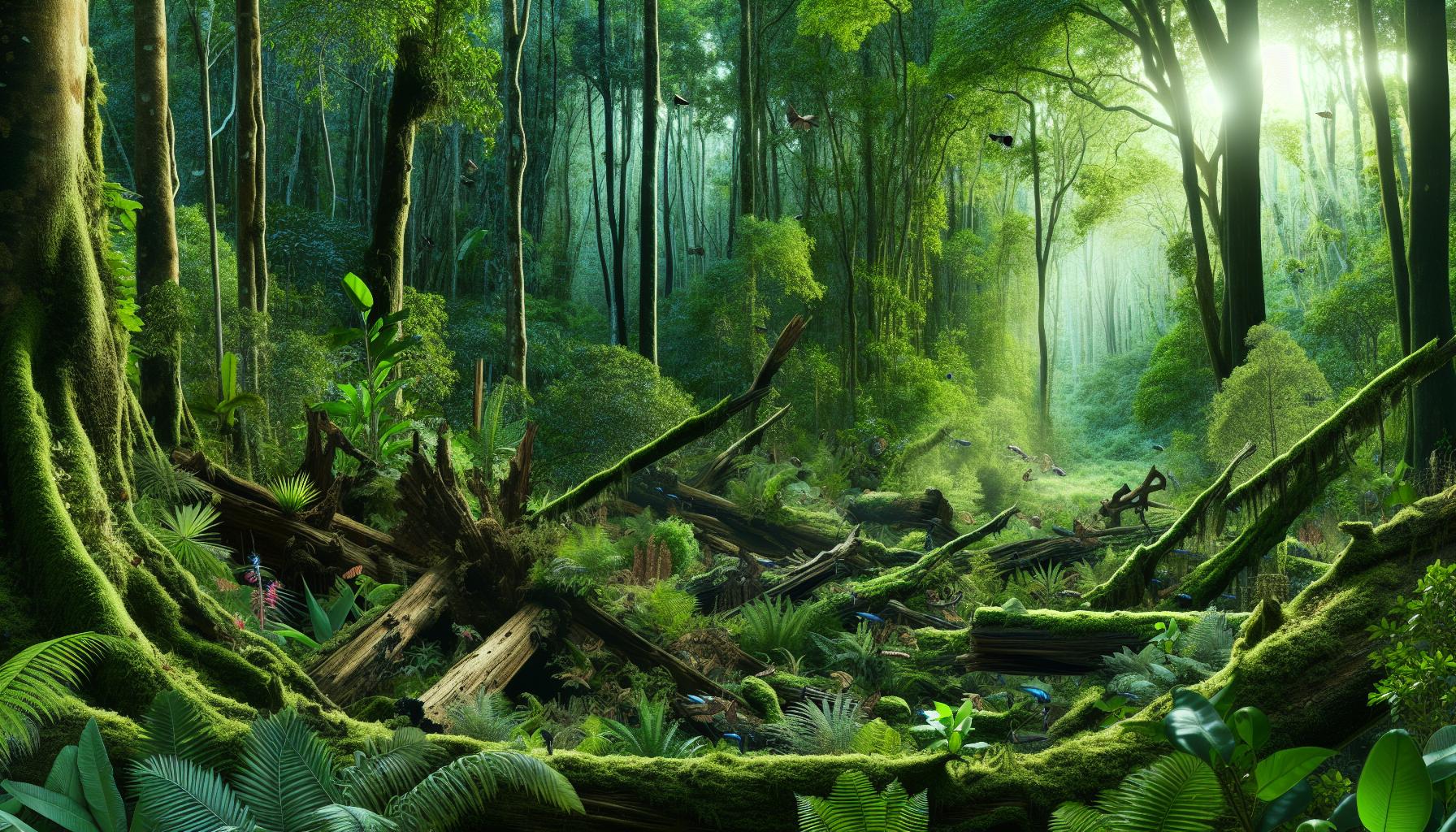Imagine a world where every creature, big and small, plays a vital role in keeping the planet spinning. Biodiversity isn’t just a fancy term for a crowded zoo; it’s the secret sauce that makes ecosystems thrive. From the tiniest microbes to majestic elephants, each species contributes to a balanced environment that supports life.
When biodiversity flourishes, ecosystems become more resilient, adapting to changes like a pro at a dance-off. They handle stressors like climate change and pollution with flair, ensuring that nature keeps doing its thing. So, buckle up as we dive into the wild world of biodiversity and uncover how it’s the unsung hero of sustainability, keeping our planet healthy and happy. So lets give you an answer to how does biodiversity contribute to the sustainability of an ecosystem?
How Does Biodiversity Contribute to the Sustainability of an Ecosystem?
Biodiversity encompasses the variety of life on Earth, including species, ecosystems, and genetic diversity. It contributes significantly to the functionality and stability of ecosystems.
Definition of Biodiversity
Biodiversity refers to the richness of different life forms within a given area. This includes not only the species of plants and animals but also the genetic variations within these species. Ecosystems like forests, wetlands, and coral reefs each contain unique assemblages of organisms that contribute to their overall health. A diverse ecosystem increases the likelihood of species interactions, which can enhance productivity and resilience.
Importance of Biodiversity
Biodiversity plays a crucial role in maintaining ecosystem services essential for survival. These services, including pollination, nutrient cycling, and climate regulation, rely on a wide range of organisms. Healthy biodiversity supports food security by providing a variety of crops and livestock. In addition, diverse ecosystems often exhibit greater resistance to disturbances, such as pests or climate extremes, proving more adaptable in changing environments.
The Role of Biodiversity in Ecosystem Sustainability

How does biodiversity contribute to the sustainability of an ecosystem? Biodiversity significantly contributes to the sustainability of ecosystems. It builds a foundation for a balanced and thriving environment.
Enhancing Resilience
Diverse ecosystems demonstrate improved resilience against disturbances. Species diversity allows ecosystems to adapt to changes such as climate shifts and habitat loss. For instance, a variety of plant species supports overall ecosystem health by stabilizing soil and retaining moisture. Higher biodiversity insulates ecosystems from pests and diseases as numerous species can fulfill similar ecological roles. This redundancy ensures that if one species declines, others can maintain the ecosystem’s functions, promoting longevity and stability.
Supporting Ecosystem Services
Biodiversity underpins various ecosystem services that directly impact human well-being. Pollination, a service provided by numerous insect species, enables the growth of fruits and vegetables. Nutrient cycling, essential for soil fertility, benefits from diverse soil microorganisms. A variety of species promotes clean air and water through their natural filtration processes. Different ecosystems, such as wetlands and forests, serve as vital carbon sinks, helping mitigate climate change impacts. Collectively, these services sustain food security and enhance human health, emphasizing the critical role of biodiversity in maintaining ecosystems.
Examples of Biodiversity Impacting Sustainability

Asking yourself how does biodiversity contribute to the sustainability of an ecosystem? Here is the answer: Biodiversity significantly influences ecosystem sustainability through various examples across ecosystems.
Forest Ecosystems
In forest ecosystems, multiple tree and plant species contribute to soil health by preventing erosion. Diverse flora encourages a variety of fauna, creating a balanced food web. This web supports natural pest control, enhancing agricultural productivity nearby. Nutrient cycling thrives, as different species decompose at varying rates, enriching the soil. Furthermore, forests act as crucial carbon sinks, sequestering large amounts of carbon dioxide, which aids in climate regulation. Increased species richness helps forests adapt to environmental changes, promoting overall resilience.
Marine Ecosystems
Marine ecosystems demonstrate biodiversity’s impact through complex interactions among species. Coral reefs, hosting thousands of marine species, provide essential habitats and protect coastlines from erosion. Diverse fish populations maintain ecological balance by controlling algae growth. Marine biodiversity also supports unique nutrient cycling processes that enhance water quality. Furthermore, resilient coral systems withstand temperature fluctuations and other stressors. Various species contribute significantly to local economies, providing sources of food and income. These aspects underline the importance of biodiversity in sustaining healthy marine environments.
Threats to Biodiversity

Biodiversity faces numerous threats that negatively impact ecosystem stability and sustainability. Habitat destruction and climate change rank among the most significant contributors to declining biodiversity.
Habitat Destruction
Habitat destruction occurs when natural environments are altered or destroyed, primarily due to urban development, agriculture, and logging. These activities lead to fragmentation of ecosystems, isolating species and making it difficult for them to thrive. Loss of habitat directly affects the availability of resources like food and shelter, resulting in declining populations. For example, wetlands drained for agricultural use disrupt many aquatic species reliant on these ecosystems for survival. The destruction of forests for timber diminishes not only tree diversity but also the myriad organisms that depend on these trees. Preserving habitat integrity is crucial for maintaining biodiversity and ensuring ecosystems function effectively.
Climate Change
Climate change significantly influences biodiversity through shifting weather patterns and increasing global temperatures. Altered climates disrupt the delicate balance of ecosystems, affecting species distribution and survival. Many species struggle to adapt or migrate as temperatures rise or precipitation patterns change. For instance, coral bleaching occurs when warm waters stress marine ecosystems, leading to the decline of vital coral reef species. Altered conditions also facilitate the spread of invasive species, further threatening native populations. Ecosystem services, like pollination and water purification, suffer due to the impacts of climate change, underscoring the urgency of addressing this global challenge to preserve biodiversity.
Conservation Strategies
Conservation strategies play a vital role in maintaining biodiversity and ensuring the sustainability of ecosystems. Various approaches can significantly enhance ecosystem resilience and health.
Protected Areas
Protected areas serve as critical sanctuaries for biodiversity, preserving habitats and preventing species loss. These locations enable ecosystems to function undisturbed, which helps maintain ecological balance. For instance, national parks safeguard diverse species and promote natural processes essential for sustainability. By limiting human activities, protected areas allow natural habitats to thrive, benefiting both wildlife and local communities. Each protected site contributes uniquely to biodiversity conservation, helping mitigate impacts from climate change and habitat destruction.
Sustainable Practices
Sustainable practices foster long-term ecological health while promoting economic development. Agriculture that prioritizes crop rotation enhances soil fertility, improving plant diversity and resilience. Incorporating organic farming reduces chemical inputs, positively affecting water quality and biodiversity. In fisheries, sustainable harvesting methods protect fish populations and ecosystems, ensuring future resource availability. Communities can implement sustainable tourism to minimize environmental footprints, benefiting local economies while preserving natural resources. Each of these practices actively contributes to a balanced ecosystem, fostering sustainability for future generations.
Future of Biodiversity
Biodiversity is a cornerstone of ecosystem sustainability. Its intricate web of interactions ensures that ecosystems remain resilient and adaptable to environmental changes. By preserving diverse species and habitats, the balance necessary for vital ecosystem services is maintained. This balance not only supports wildlife but also enhances human well-being through the provision of clean air, water, and food security.
Addressing the threats to biodiversity is crucial for the health of our planet. Implementing conservation strategies and sustainable practices can help safeguard these natural systems for future generations. Ultimately, fostering biodiversity is essential for creating a sustainable future where both nature and humanity can thrive together.


